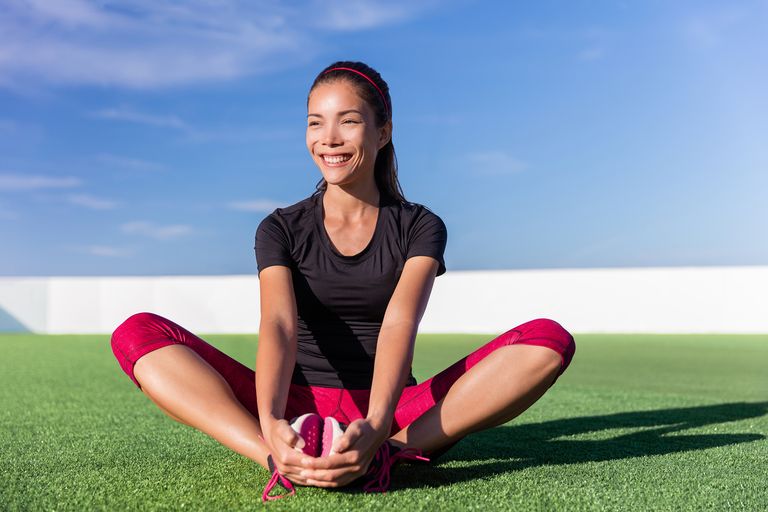At one time of another, we've all been guilty of not stretching after a run. But while it's easier – and, quite frankly, more time efficient – to skip a warm down, making time to stretch post run is important.
What are the benefits of stretching?
Stretching after a run promotes blood flow, which boosts muscle recovery and repair, by helping remove lactic acid and waste products. This, in turn, will reduce muscle and joint soreness. It also improves flexibility in your main running muscles and improves your range of motion, leaving you less susceptible to muscle strains and over-use injuries.
Dynamic stretching is also recommended as part of your running warm-up, to prepare your body for the task ahead. This reduces your risk of muscle strain injuries and has also been shown to improve running performance.
What are the best runner's stretches?
Depending on how flexible you are, perform the our seven runner's stretches outlined below after every run. If you need to work on a specific muscle, we've also listed some deeper runner's stretches to perform after your run. We've also included some some full-body stretches which target multiple muscle groups – these can be performed once or twice week or after your run.
Hold all of the below stretches for around half a minute, and depending on how long you’ve got, repeat once or twice on each leg.
1. Lying hamstring stretch
Keep your upper body relaxed and both legs straight as you pull one leg towards you. A variation: lying as before, bend the upper knee in towards your chest, and with a non-stretching band/cord around the foot of the bent leg, push away with the foot, trying to straighten the leg against the tension of the cord. You should feel the stretch higher up the hamstring.
2. Lying gluteal stretch
Lie on the floor and bend both knees, keeping your feet on the floor. Adjust the angle of your hips and front knee to intensify the stretch. Place the ankle of one leg on the opposite knee and grasp the thigh of the bottom leg, pulling both legs into your chest. You leave your grasped leg bent or extend upwards. You’ll feel a stretch in the muscles around the side of your buttocks.
3. Groin stretch
Sit on the floor, place the soles of your feet together and let your knees drop out to the side. Gently use your leg muscles to move your knees towards the ground. Keeping a straight back and bringing your feet closer to your body intensifies the stretch.
4. Straight leg calf stretch
Step your left leg forward, knee bent, foot flat on the floor, and extend your right leg straight back, placing your heel flat on the floor. Keep the right leg straight and lean into the wall until you feel s stretch in the right calf.
5. Soleus (lower calf) stretch
Stand closer to the wall and bend your front leg, keeping the back leg straight with your foot flat on the floor. Then, lean your hips back, to bend both legs. You should feel a stretch in the lower calf of your bent leg.
6. Hip flexor stretch
Kneel on the ground on one leg, with the other leg out in front of you and positioned at a 90-degree angle. Lean your hips forward, keeping your hips squared forwards and your upper body vertical; slumping forwards reduces the stretch. Alternatively, watch this video on how to stretch your hip flexors and quads.
7. Standing quadriceps stretch
Stand on one leg, bending the knee of your opposite leg by grasping your ankle with one hand. Flex your foot and keep your body straight to maximise the stretch through the front of your leg. You can put one hand on a wall if you need balance.


